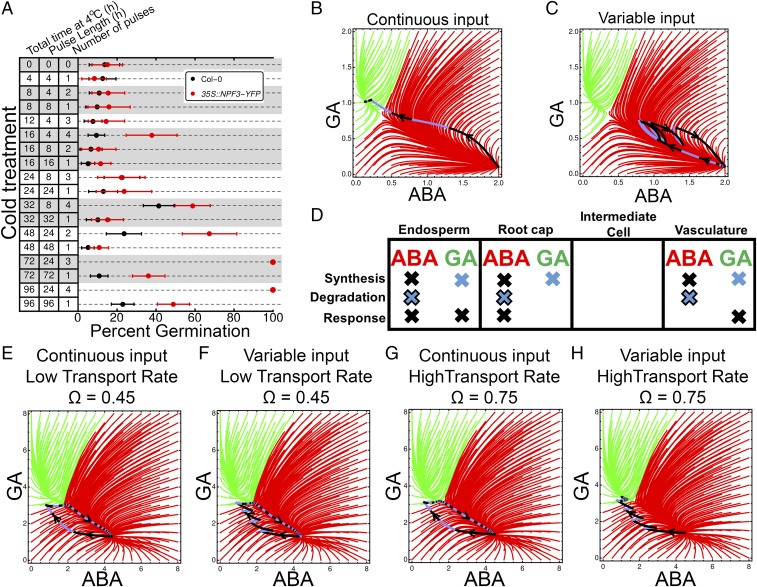Fig. 3.
Influence of interrupted cold treatment on developmental fate switching in dormant Arabidopsis seeds. (A) Percentage germination of wild-type Col-0 and 35S::NPF3-YFP seeds with continuous or interrupted cold (4 °C) for varying lengths of time, each counted 16 d after the start of the experiment. Single-region models with continuous virtual cold input (B) and interrupted cold input (C) are shown. (D) Schematic depicting the modeled distribution of metabolic components across the four-region model, motivated by our results on spatial localization of these components. Dark crosses indicate constitutively present components, pure blue crosses indicate components induced in response to cold (GA synthesis), and blue crosses with a dark outline represent constitutively present ABA degradation that is further induced in response to the cold (18). Dynamic behavior of the four-region model with continuous input and a low hormone transport rate (0.45) (E), variable input with a low hormone transport rate (F), continuous input and a high hormone transport rate (0.75) (G), and variable input and a high hormone transport rate (H) is illustrated. For the same total cold exposure, only a varying environment (sensed by communicating, separate compartments) breaks dormancy. Intervals of temperature treatment time in B, C, and E–H are indicated by different colors on the line drawn on the attractor basin, which depicts the trajectory of the system, alternating between black and blue, with each representing a single unit of time. Each continuous temperature and alternating temperature time unit is indicated using this same color scheme. Error bars in A indicate the 95% confidence interval.

